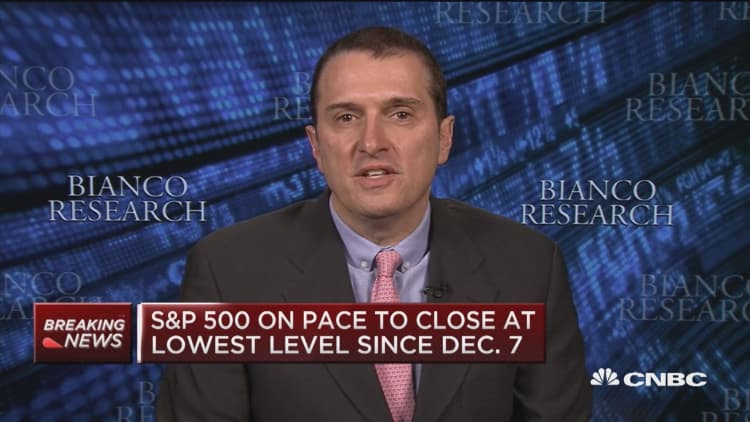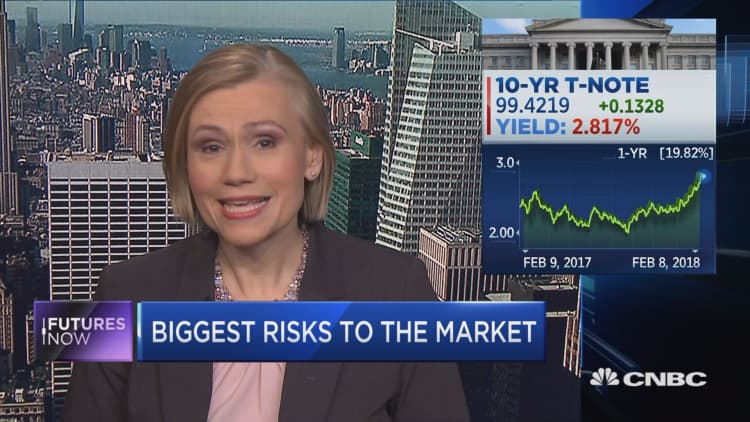
The moment the wheels started coming off for the market happened about 8:30 a.m. ET last Friday morning.
That was when the Labor Department reported that average hourly earnings had increased more than expected in January, to a pace that now stood at 2.9 percent over the past year.
While that may have been a good-news moment for workers who had suffered through a decade of nearly flat paychecks, the market didn't take it well. Investors instead found themselves confronted by their worst fears, namely that wage pressures were building that in turn would stoke wider inflation through the economy.
The practical implications would be that the Federal Reserve would have to hike interest rates faster than the market had been anticipating. Given that the stock gains over the past nearly nine years have been fed by low rates, the signal was foreboding.
Then the financial markets went to work. Stock market futures Friday immediately declined, and the equity markets have been on a rough-and-tumble ride since.
Even though government bond yields remained fairly contained, the damage to the stock market has been substantial. Moreover, treating good news as bad news is an ugly harbinger, another classic sign of a late-stage bull market that chills trading floors.
Economists pondered the longer-run implications.
"Wages rose much more sharply than had been anticipated and, when combined with anecdotal reports from the corporate sector, the evidence suggests pretty clearly that the rise is both sustainable and likely to accelerate in the medium term," Eric Winograd, U.S. economist at AllianceBernstein, said in a note after the government released its jobs report Friday. "The magnitude of the move in January may be exaggerated, but the trend is likely to persist."
Winograd took it a step further, positing that the Fed likely will increase the pace of rate hikes from an indicated three moves to four.
Markets, if not completely on the same page, are at least pondering a post-Fed life.
"We are rapidly approaching the point at which low rates will no longer provide support to the equity market," Winograd said. "Recent increases in rates mean that financial conditions are tightening, and that will make the case for equities much harder to make at current valuation levels."
Since then, the market has suffered through a week of nasty swings that have included two days when the Dow industrials have fallen more than 1,000 points. That includes Thursday's 1,032-point tumble into correction territory.
While some experts — Natixis economist Joseph LaVorgna among them — aren't convinced the wage increase will trigger meaningful inflationary pressures, the market, for now, is clearly concerned.
WATCH: Strategist predicts the end is not near for the correction



